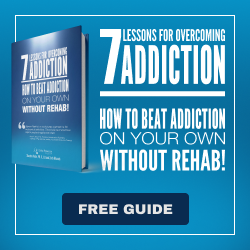People Aren’t Addicted to THE Drug!
The New York Times has announced why there are so many drug deaths and why we can’t solve the addiction problem. It’s because people use more than one drug simultaneously!
According to the Times addiction is now harder to cure than it ever was.
We need this explanation in order to explain how, despite our billions of dollars in investment, people are dying from drug use at all-time record levels.
What have the National Institute on Drug Abuse (NIDA), Surgeon General and the Office of National Drug Control Policy (ONDCP) been doing in the interim?
They’ve been warning us about the lethal addictiveness of synthetic opioids, especially Fentanyl. If we can just block their importation from China (as the Biden administration is going all-out to do) — ergo, problem solved! Even leading edge harm reduction proponents like Ethan Nadelmann and Maia Szalavitz have been doing the same.
Here what the New York Times (Front page: Nov 13, 2023) says:
‘A Monster’: Super Meth and Other Drugs Push Crisis Beyond Opioids
Millions of U.S. drug users now are addicted to several substances, not just opioids like fentanyl and heroin. The shift is making treatment far more difficult.”
So, the Times is claiming, this is new news, and explains our dismal failure to curtail the current drug deaths epidemic. Pheeew! I’m glad there’s an explanation. Otherwise it would suggest that we don’t know what we’re doing and that our entire approach to drugs and addiction is wrong headed. After all, the Surgeon General has been saying since 2000 we could just treat addiction and depression away.
Likewise as to Nora Volkow, still the director of the NIDA.
As I’ve instead been telling these worthies for decades, the drug, the mental illness, is not the thing. Addicted people’s lived experience and life context is!
In my approach — and that of the Life Process Program — these are the things helpers must address.
And how do I/LPP know this?
Because it was discovered 50 years ago in Vietnam.
As Zach Rhoads and I emphasized in Filter magazine:
Resisting efforts to exaggerate the dangers of drugs does not mean we should ignore them. People suffer, and sometimes lose their lives, around excessive, compulsive and chaotic drug and alcohol use. But people’s likelihood of harmful and fatal substance use is linked, like so much else, to their societal circumstances. Addressing social concerns remains the key element to improving our alarming addiction profile and the proliferation of drug deaths in America. It is also the key to dealing with individual addictions.
In other words, 90%+ of addicted veterans resisted addiction stateside, even though half of them used a narcotic again. Also, amazingly, heroin use was no more “addictive” (used daily) than marijuana, barbiturates, and amphetamines. The Vietnam experience culminated in the 1970s. Writing twenty tears later, the lead researcher in the Vietnam study, Dr. Lee Robins, summarized its findings:
“The surprisingly low levels of readdiction and the rarity of addiction to narcotics alone as compared with poly-substance dependence are findings still not entirely incorporated into public and scientific views of heroin addiction.”
In other words, the New York Times article about how people mixing in other drugs with opioids as a “new” phenomenon proved exactly how much we haven’t learned about addiction since the Vietnam experience, a half century ago!






Always found Maia to be a credible source.
The game’s changed and always changes. Right now in West of Scotland. Opiate treatment isn’t enough. There needs to be services to delay or, even better prevent injecting of stimulants.
Just under 10 percent of people injecting in the street have HIV in Glasgow of an estimated 500 people.
The Dutch eradication of BBV’s 2016 and Liverpool prevention successes decades ago should be the blue print for everything with tweeks here and there, as new substances prevent new challenges within transitioning contexts
Jeez I haven’t even mentioned benzos and alcohol and sepsis from injecting in dirty lanes.
Maybe 1 day we will get there with equality of care and rights for everyone.
Without separation of markets and intensive outreach and drop in for substance testing and assessments for medical treatment including prescribed cocaine while in Hospital for those at risk of sepsis death and loss if limbs we’ll have a long long wait.
When I got clean in 1983 the recovery rate in NA was 87%. Now it’s zip. The program got watered down, docs over prescribed antidepressants and Drug Court flooded or meeting with people who were disruptive. Heck, now days it’s hard to even hear what’s being said in a meeting. Oh well, it was good while it lasted. Now we are in a drug elidemic with a crippled twelve step program. I tried to tell NA not to get involved with the federal government.